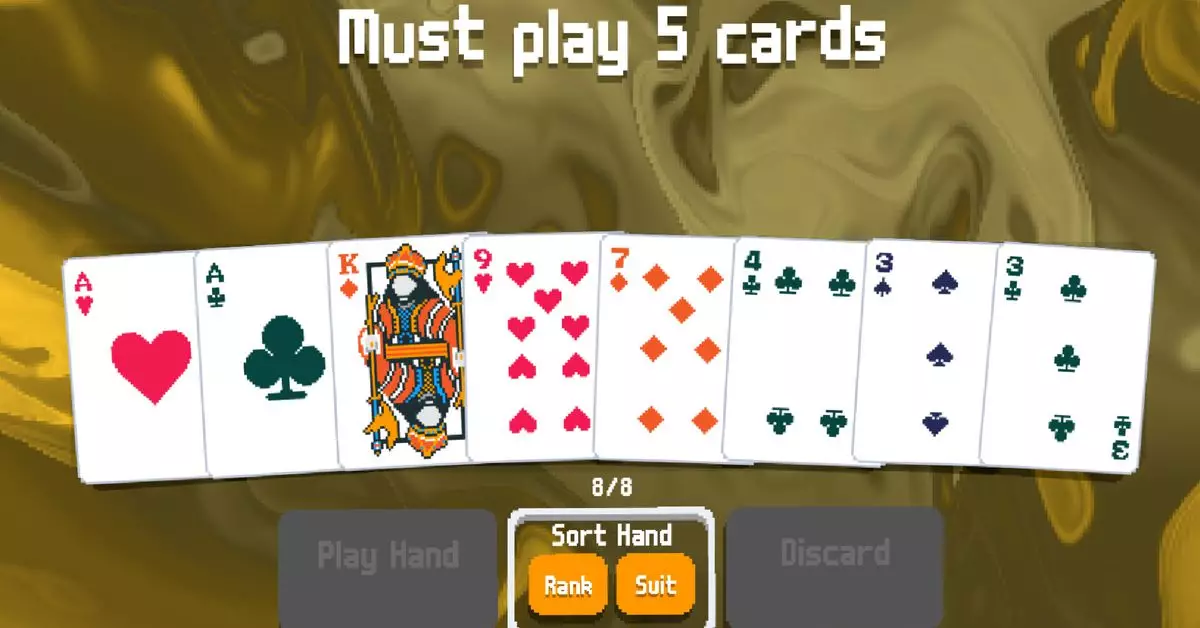The gaming industry faces an abundance of challenges that include not only the creative demands of developing engaging gameplay but also the regulatory burdens imposed by rating systems. A recent incident involving the poker-themed roguelike game, Balatro, underscores the complexities and inconsistencies present in these rating mechanisms, particularly in the European PEGI system. The game’s creator, LocalThunk, has expressed visible frustration over its unexpected 18-plus rating, a decision that, he argues, unfairly stigmatizes his creation while allowing other games with arguably more problematic mechanics to thrive under much lighter restrictions.
An Unforeseen Rating Shift
Balatro was initially rated suitable for players aged 3 and above when it launched in February. However, this rating was swiftly revised to 18-plus due to the game’s use of “prominent gambling imagery,” as detailed by the PEGI rating body. Such a stark shift raises essential questions about the criteria used to determine game ratings and whether they are applied uniformly. It appears that Balatro’s unfurling storyline and gameplay mechanics that educate players on poker strategy were sufficient for PEGI to categorize it as potentially harmful to younger audiences, highlighting a disconnect between the game’s content and the interpretation by the regulatory body.
The fact that an educational gaming experience involving poker could be seen as equivalent to promoting gambling exemplifies the challenges faced by developers in navigating these rating systems. LocalThunk’s sardonic remark about possibly introducing microtransactions and loot boxes to lower Balatro’s rating to something akin to the popular EA Sports FC further illustrates the absurdity in the current rating landscape. It raises a poignant question: Should developers dilute their games with in-app purchases just to comply with a rating system that seems misaligned with actual gameplay content?
The crux of the debate lies in the apparent double standards of game ratings. LocalThunk points out a significant inconsistency where games like EA Sports FC, which indeed incorporate randomized purchasing mechanics — elements that many consider to promote gambling-like behavior — receive a mere 3-plus rating. These mechanics are particularly concerning given their accessibility to younger audiences, as they not only include purchasing options but also elements of chance that can affect gameplay.
This inconsistency is not only frustrating for developers like LocalThunk but also for parents and players who rely on such ratings for guidance in choosing age-appropriate content. The disparity between games prompts one to wonder what guidelines PEGI and similar organizations are truly adhering to. If a game so evidently devoid of actual gambling elements like Balatro can be rated harsher than those that facilitate real-world gambling characteristics, it undermines the integrity of these rating systems.
LocalThunk’s discontent led him to engage with PEGI to express his concerns about the rating assigned to Balatro. However, the response he received revealed a lack of accountability. PEGI explained that their rating system is guided by EU laws, suggesting a bureaucratic red tape that disincentivizes any constructive revision of the rating process. This situation illustrates a broader issue in the regulatory framework surrounding the gaming industry: the disconnect between the evolving landscape of game development and outdated rating systems that struggle to keep pace.
The game development community needs an ongoing dialogue with rating bodies like PEGI that considers not just the surface content, such as visuals and themes, but also the educational aspects of games. By relegating games to static categories based solely on content ownership, PEGI risks stifling innovation in a vibrant industry that continuously strives to blend entertainment with learning and creativity.
Balatro’s situation acts as a microcosm of larger systemic issues within game ratings. As LocalThunk cleverly noted, merely possessing poker-themed elements should not earn a game an 18-plus rating without considering the overall gameplay context. The gaming industry must advocate for a more nuanced understanding of game content, one that governs ratings transparently while appropriately reflecting the game’s immaterial impact on players, particularly younger audiences. There are lessons to be learned here, pushing for reforms that create harmony between creative freedom and responsible gaming practices.

